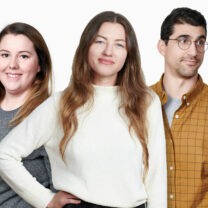Blog
Five Reasons Why Your U.S. Trademark Application May Be Refused
- Trademark Clearance

Are trademark applications ever refused?
Absolutely.
According to the USPTO, approximately 18% of applications failed during first action in 2016.
When you think about it, that number is quite shocking. It means nearly 1-in-5 trademark applications were refused.
Considering how time-consuming the entire trademark application process is —from trademark screening, to clearance searching, to paperwork — it makes sense for applicants to do everything within their power to submit marks with the greatest likelihood of achieving success.
Federal registration of trademarks is governed by the Trademark Act of 1946, 15 U.S.C. §1051 et seq., and the Trademark Rules of Practice, 37 C.F.R.
Trademarks get rejected for several reasons. As is often the case, what should be the final verdict isn’t always clear.
In this article, we’ll reveal some of the more common grounds for refusal before looking at how you can up your chances for success. Let’s get started:
1. Likelihood of Confusion
Is your mark one-of-a-kind? Or could it be confused with something else?
“Likelihood of confusion” is perhaps the most complicated aspect of the trademark application process. If there is determined to be a high probability of the public mistaking your mark for another already in existence, it’s back to the drawing board.
Who determines how close is ‘too close?’
That would be the USPTO examining attorney.
Their job is to compare your mark against both already registered marks and those pending application. Obviously, marks don’t have to be identical to cause confusion. The similarity in sound, appearance, or meaning may be grounds for supporting the likelihood of confusion.
For example, if you open a restaurant and name it “Subwayz” or “Subways,” it will obviously be mistaken for the popular sandwich shop, Subway®.
Even if you change the color scheme, and add railroad tracks to the logo, it’s too similar. Unfortunately, there are no absolutes for determining the likelihood of confusion. With this in mind, you may decide to move forward knowing your mark is similar to another, being prepared to appeal the decision if the application is met with rejection.
While it is possible to win an appeal and get your trademark approved, if it is even remotely likely to cause confusion, be prepared to defend that mark in court.
2. Commercial Relationship Conflicts
Do these marks focus on the same channels of trade or class of purchasers? To find a conflict, the marks do not have to be identical, and the goods/services do not have to be the same. The mark may be found in conflict if the marks are similar, and the goods/services are related.
Add to that the fact that your service/product need not be in the same “class” as the other person’s service/product for “likelihood of confusion” to be found.
If a Ski Resort Company has a Skiing Lodge called “SnowDrift King,” that trademark would be registered in Class 41 under Ski Resort Services. If a second company wanted to produce a range of ladies’ ski clothing called “Snowdrift Queen,’” that trademark would fall into class 25.
Even though the name is not identical, and the products are very different, there is still a possibility of a likelihood of confusion. People who go to ski resorts will likely purchase ski clothing. If they are familiar with the pre-existing ski resort, they may assume that ‘SnowDrift King’ resorts produce the ‘SnowDrift Queen’ line of apparel.
3. Geographical Terms
Choosing a geographical trademark has its pros and cons. On the plus side, you’re unofficially declaring yourself the de-facto choice for whatever you’re selling.
With a name like “Austin Smoothie,” locals won’t have a hard time remembering you when they get a hankering for a fruity beverage. On the other hand, you will be limiting yourself from future expansion into other markets without having to rebrand.
Trademark applications for geographic terms may be rejected if they are found to be “deceptively misdescriptive.” Of course, there are exceptions. A (non-geographic) “descriptive” mark,” can get around this charge by showing secondary meaning. The same is true for a “geographically descriptive” mark.
Here’s one example of how this works: In 2009, the USPTO turned down an application for the vodka name “Moskovskaya.” The word means “of Moscow” in Russian. Spirits International, the company applying for the mark, was not based in Moscow. For this reason, the USPTO found the mark to be geographically deceptively misdescriptive.
Ultimately, the case ended up to the Federal Circuit before being sent back to determine whether Russian speakers were a large part of the company’s target audience.
4. Surnames
The USPTO has an interesting policy on trademarking surnames. If the “primary significance” attributed to your mark is the surname — not the product — the application will be refused. And this makes sense.
Can you imagine living in a world where your last name, along with those of all your friends, were trademarked? Conversely, if you have already built the surname into an established brand, the mark will most likely be accepted.
This policy allows popular brands, such as McDonalds®, to legally enjoy their registered marks. Your surname must be associated with the product (i.e., established as a brand) before it can be registered.
The Bottom-Line: If you can’t prove secondary meaning, you must either:
- Choose a new name.
- Grow brand recognition around the surname.
5. Ornamental as Applied to Goods
Applying for a mark that is only used as decoration? It will be refused.
The confusion most often arises with designers. Say Armani® designed a t-shirt with a decorative 21. Since the shirt sold quite well, the company decided to trademark the design.
In this instance, Armani’s application would be refused. It’s nothing more than a decorative feature, which cannot be trademarked.
However, had the 21 been “the name of the shirt” or “the type of shirt,” the application would most likely have been accepted.
What Else Should You Know?
It takes about three months from the date your application is submitted for it to be assigned to an examining attorney. He or she will compare your trademark against the criteria mentioned above, pending applications and other criteria, before ultimately issuing an opinion.
If your mark is refused, you will be given six months to respond to an Office Action.
How To Increase Your Trademark Application Success
Ultimately, the goal of every business is to clear and register their marks as quickly as possible. Nothing slows productivity down faster than a refused trademark application. The good news?
You can increase your chances of application success with NameCheck™ —the technology-assisted software solution for companies who want to leave no stone unturned during the trademark search clearance process.
Our algorithm pulls information from over 180 databases before assessing risk in a matter of seconds. Word linguistics, product types, app store usage, and global jurisdictions are all evaluated before the user is presented with a risk factor score.
With NameCheck™, you are instantly presented with a ranked list of similar marks. The program’s combined immediacy and accuracy make it a powerful tool for both brand owners and attorneys.
Ready to give it a spin?
DISCLAIMERS:
*This is an informational opinion article of the author. The views and opinions expressed in this article are those of the author and do not necessarily represent official policy or positions of Corsearch or its clients.
*The above trademarks and logos are not affiliated with or owned by Corsearch, and are used for illustrative purposes only as public record from the respective Trademark Offices.
*The above-mentioned brands are noted for factual reporting purposes only, the listing of the brands does not imply any relationship with Corsearch or its related entities.





